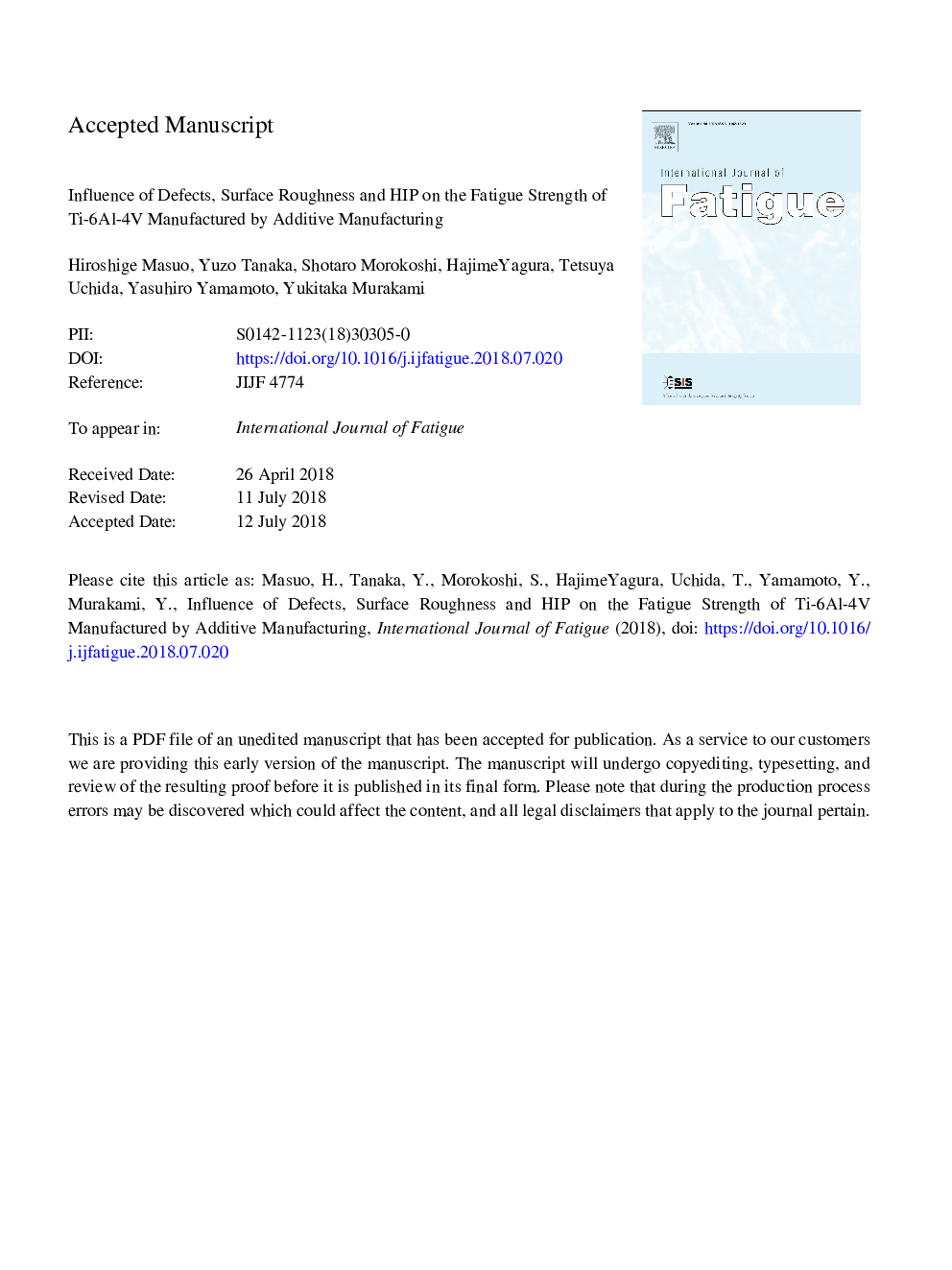| Article ID | Journal | Published Year | Pages | File Type |
|---|---|---|---|---|
| 11003913 | International Journal of Fatigue | 2018 | 41 Pages |
Abstract
The additive manufacturing (AM) is expected to be a promising manufacturing process for high strength or hard steels such as Ti-6Al-4V for the aerospace industry components having complex shapes. However, disadvantage or challenge of AM is presence of defects which are inevitably contained in the manufacturing process. This paper focuses on the effects of defects, surface roughness and Hot Isostatic Pressing (HIP) process on the fatigue strength of a Ti-6Al-4V manufactured by AM. Defects were mostly gas pores and those made by lack of fusion. Many defects which were formed at subsurface were eliminated by HIP and eventually HIP improved fatigue strength drastically to the level of the ideal fatigue limit to be expected from the hardness. Surface roughness had strong detrimental influence on fatigue strength. The method for estimating the effective size âareaeffmax of irregularly shaped defects and interacting adjacent defects was proposed from the viewpoint of fracture mechanics.
Keywords
Related Topics
Physical Sciences and Engineering
Engineering
Mechanical Engineering
Authors
Hiroshige Masuo, Yuzo Tanaka, Shotaro Morokoshi, Hajime Yagura, Tetsuya Uchida, Yasuhiro Yamamoto, Yukitaka Murakami,
